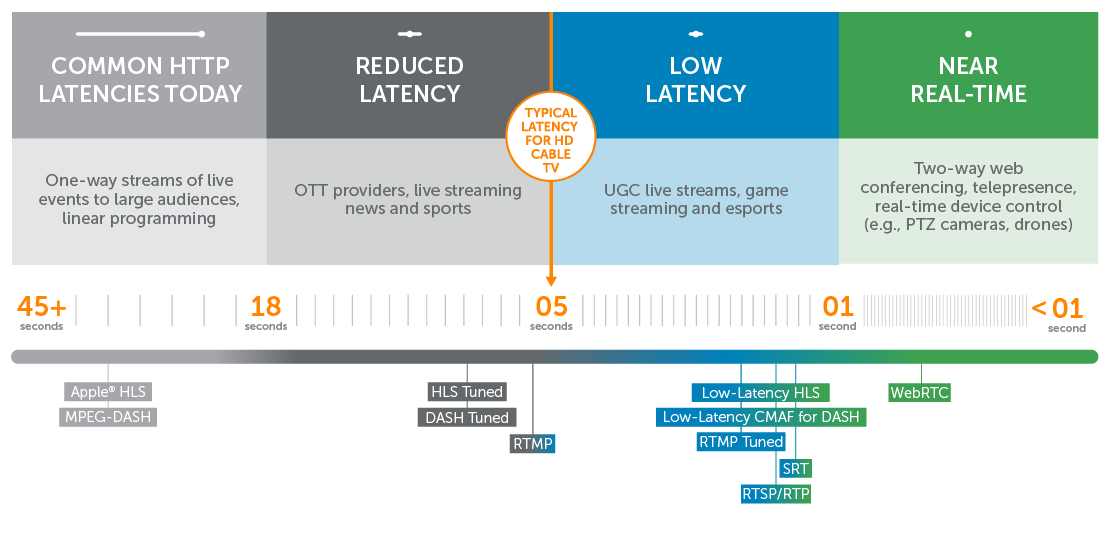Capability: Low Latency
Low Latency Streaming
Stream delivery with unparalleled speed and reliability.
Low-Latency Streaming for Every Use Case
With a wide variety of features, projects, and protocol-compatibilities, Wowza has a low-latency solution for you. We can get your streams from camera to screen with unmatched speed, reliability, quality and resiliency.
Learn more about how low-latency technologies are the key to interactive streaming by downloading our free report.
Apple Low-Latency HLS
The same simplicity, scalability, and quality of HLS — but faster. Wowza Streaming Engine with Apple Low-Latency HLS enables low-latency video streaming coupled with the high-quality of traditional HLS. Stream live and on-demand content to play natively on Apple mobile devices in 3 seconds or less while offering backward compatibility to existing clients. Provide a more interactive user experience to your audience, no matter the viewership size.
WebRTC
At sub-500ms delivery, WebRTC provides real-time communications (RTC) capabilities via simple APIs. While WebRTC is traditionally known for peer-to-peer communications, utilizing Wowza Video gives users the ability to scale beyond one-to-one or one-to few connections, instantly distributing to viral audiences with the real-time experience necessary for interactive streaming.
Secure Reliable Transport
Wowza supports the ingest of streams via SRT (Secure Reliable Transport)—an open-source technology designed to help you deliver high-quality, secure and low-latency video. SRT accounts for packet loss, jitter and fluctuating bandwidth, maintaining the integrity and quality of your stream.
Low-Latency Formats and Protocols
Wowza supports nearly all common encoding formats and streaming protocols—many of which can be used to achieve low-latency streams. The format and protocol that are right for your use case depend on your scalability, interactivity and endpoint-compatibility needs.

Traditional Streaming Protocols
Traditional streaming protocols such as RTSP and RTMP can be used for low-latency streaming, but they don’t scale well and are not natively supported on all endpoints (e.g., iOS devices). They work best for transporting an encoded stream to the media server and repackaging into a more playback-friendly alternative.
Adaptive Streaming Protocols
Protocols such as HLS, HDS, HSS, and MPEG-DASH work well for streaming to large audiences on a wide range of devices at once, and are easily scalable. Historically, HTTP-Based Adaptive Streaming Protocols were not well suited for low-latency streaming, but with the release of Low-Latency HLS, reduced-latency is now achievable.
Emerging Technologies
Emerging technologies like SRT and WebRTC are designed for near-real-time audio, video, and data delivery — even over less-reliable connections. These formats are are ideal for use cases that require a high degree of interactivity and lightning-fast delivery. Solutions like Real-Time Streaming at Scale are bringing these capabilities to the masses.




